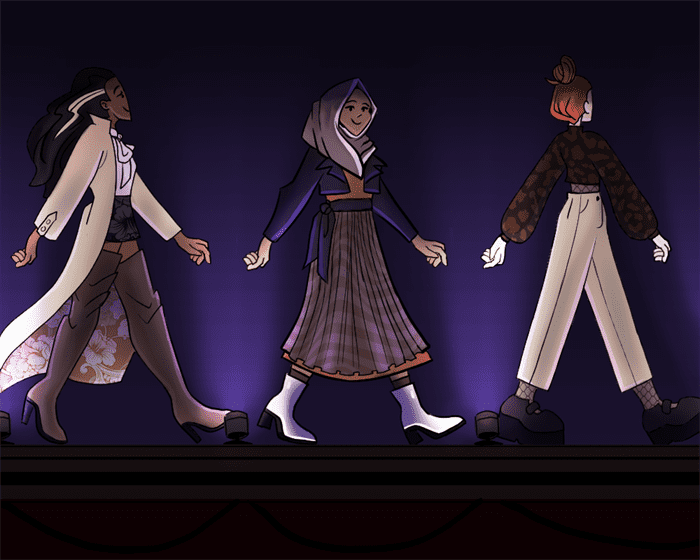The hijab is a veil worn by Muslim women in the presence of any male outside their immediate family. In media, the hijab gained a lot of attention through a handful of Muslim women creating platforms in which they spread awareness and educate others about their culture.
In the past few years, there has been a global rise in effort to have diverse representation across multiple industries. The fashion industry in particular has suffered from a lack of diversity within brands when it comes to who works for them and who they represent.
During New York Fashion Week of 2016, history was made when Indonesian designer Anniesa Hasibuan sent all her models down the runway wearing hijabs that matched their garments.
Some brands have attempted to match that inclusiveness. In 2017, Nike announced their creation of the “Pro Hijab,” and in 2016, Dolce & Gabbana debuted a line of high-fashion hijabs. To some, this was a positive breakthrough, but others claimed the hijab was being fetishized and disrespected to fit modern culture without acknowledging what it stands for.
Hijabs do have a place in the fashion industry as something to be celebrated, as long as it is not for the sole purpose of being monetized. The design and campaign of hijabs for a brand should be done with a purpose beyond profit.
On a daily basis, I see women who wear different hijabs to coordinate with their outfits, as well as style their hijabs by either adding a brooch or a hat. Some women even dye their hijab and add designs or braid them.
Besides women I pass in the streets, I also have close friends who wear the hijab. Through speaking to them, I came to an understanding that the hijab is anything but limiting.
There is a lot of misrepresentation when it comes to hijabs, such as the belief that it is oppressive against a woman’s rights or something forced upon a young girl. This is untrue.
In non-Muslim countries, it is not mandatory to wear a hijab. A Muslim woman who chooses to wear the hijab may be wearing it for many different reasons, including personal preference.
Muslim designers know what their community needs because they are immersed in it. The hijab’s place in fashion should be curated by women who are a part of the culture. Otherwise, it’s similar to when you read a book with a female character that has no qualities besides their body. Lack of representation breeds ignorance.
As society moves toward equality and accessibility for all, the fashion industry must be ever-evolving. If brands want to be successful and household names want to stay relevant, they have to think about what their message is and who is creating it.
If they fail to do so, they must receive constructive criticism and be held accountable.
For Muslim women, hijabs represent much more than their belief system. It doesn’t limit their style but instead enhances it.



